The punk feminists who helped shape the Mexican art scene get a retrospective in Monterrey
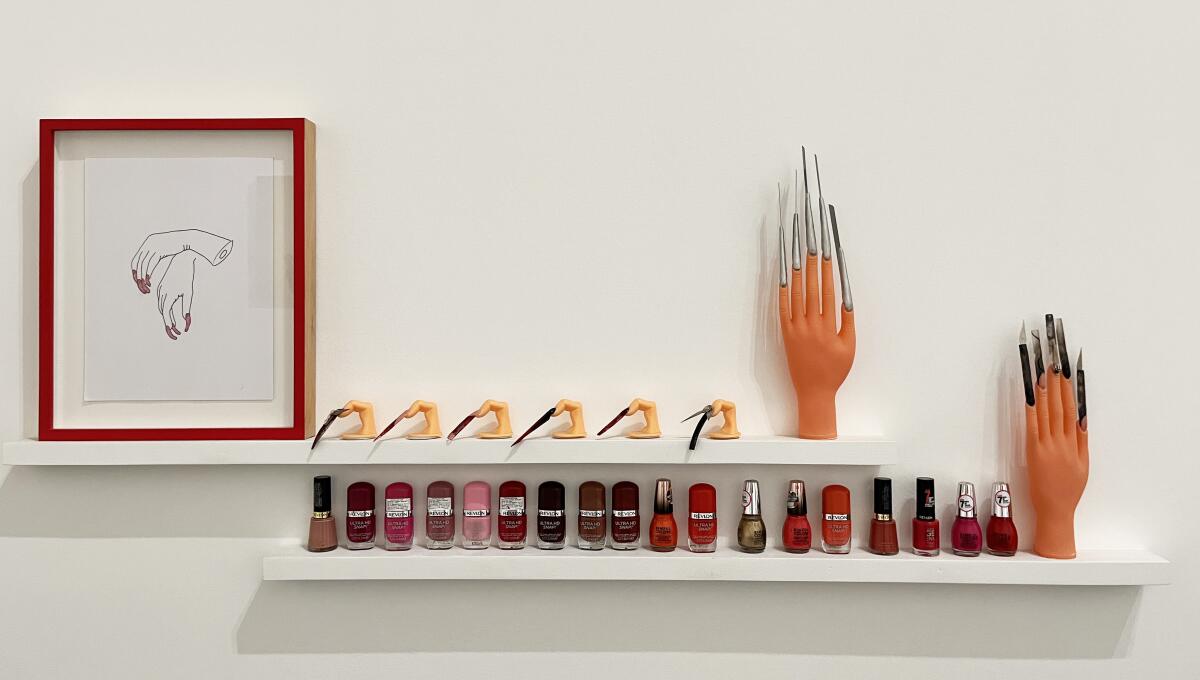
It is Day 20 of Drynuary as I write this and I’m distracted by thoughts of the perfect Manhattan. I’m Carolina A. Miranda, art and design columnist at the Los Angeles Times, with the week’s essential arts news and TV art criticism:
Pink punks
During my trip to Monterrey, Mexico last month, I completely inhaled a pair of short videos in a ground floor gallery at the Museo de Arte Contemporáneo de Monterrey created by the art collective known as marcelaygina. The videos, titled “Lipstick graffiti No. 1 y 2,” from 2002, show the artists — real names: Marcela Quiroga and Gina Arizpe — riding a bus, their lipstick looking as if it had been applied by the Joker, if the Joker were afflicted by a particularly acute case of delirium tremens. The artists, who don sunglasses as part of the look, appear, in turn, indifferent and deranged.
I’ve been thinking a lot about the marcelaygina show recently, spurred by a recent essay published by Ayesha A. Siddiqi on her Substack (read it!) that pairs an analysis of the Icelandic horror film “Lamb” with an examination of “Trad” politics and aesthetics. Trad, of course, being a conservative subculture that generally spends a lot of time agitating for Classical architecture and the hetero-nuclear family with gendered divisions of labor. “Trad endorses gender role models previously found in church sermons and 1950s suburbia,” she writes, “which are now being hailed by men and women across social media—disillusioned by the ways they feel the sexual revolution failed them and exhausted by the economic pressure of surviving capitalism in failing states.”
In their work, Quiroga and Arizpe, who both hail from Monterrey, relentlessly puncture the Trad ideals within Mexican culture: hyperfeminization, impossible standards of beauty and the various conditions (patriarchy, economics, government) that support this.

The pair, who worked as a collective from 1997 to 2010, were ahead of their time. Together, they spoofed the arch qualities of quinceañera portraiture and created an interactive art nail salon that featured highly exaggerated creations (ridiculously long falsies for toes, for example), as well as other pieces with a more cutting edge. Think: press-on nails made out of X-Acto knives.
They also engaged in far more extreme actions. At an event in Paris, they publicly urinated while wearing schoolgirl outfits. On another occasion, they painted a mural of themselves in which their faces are splashed with milk — an image that draws from the conventions of pornography while poking at stick at the objectification of women in Mexican muralism.
Make the most of L.A.
Get our guide to events and happenings in the SoCal arts scene. In your inbox once a week.
You may occasionally receive promotional content from the Los Angeles Times.
The pair were featured in the PST: LA/LA show,“Below the Underground: Renegade Art and Action in 1990s Mexico” at the Armory Center for the Arts in Pasadena in 2017. That exhibition featured documentation from a show in Mexico City, in which marcelaygina — decked out in black vinyl ensembles — reportedly got drunk and drove around the zócalo before being delivered to their show by police. Whether the police were in on it is unclear. (It is absolutely worth picking up the catalog for “Below the Underground” for the essay by Michele Fiedler, which not only gives their work some context, it provides an interesting overview of the Monterrey scene of the late ‘90s and early aughts.)
The show at MARCO, titled “Nos gustaría contestar algunas preguntas: colectivo marcelaygina, 1997-2010,” brings needed attention to “las niñas terribles del performance mexicano” — the bad girls of Mexican performance — as they have been described. In addition to issues of gender, the pair have also taken on violence, the border and migration.
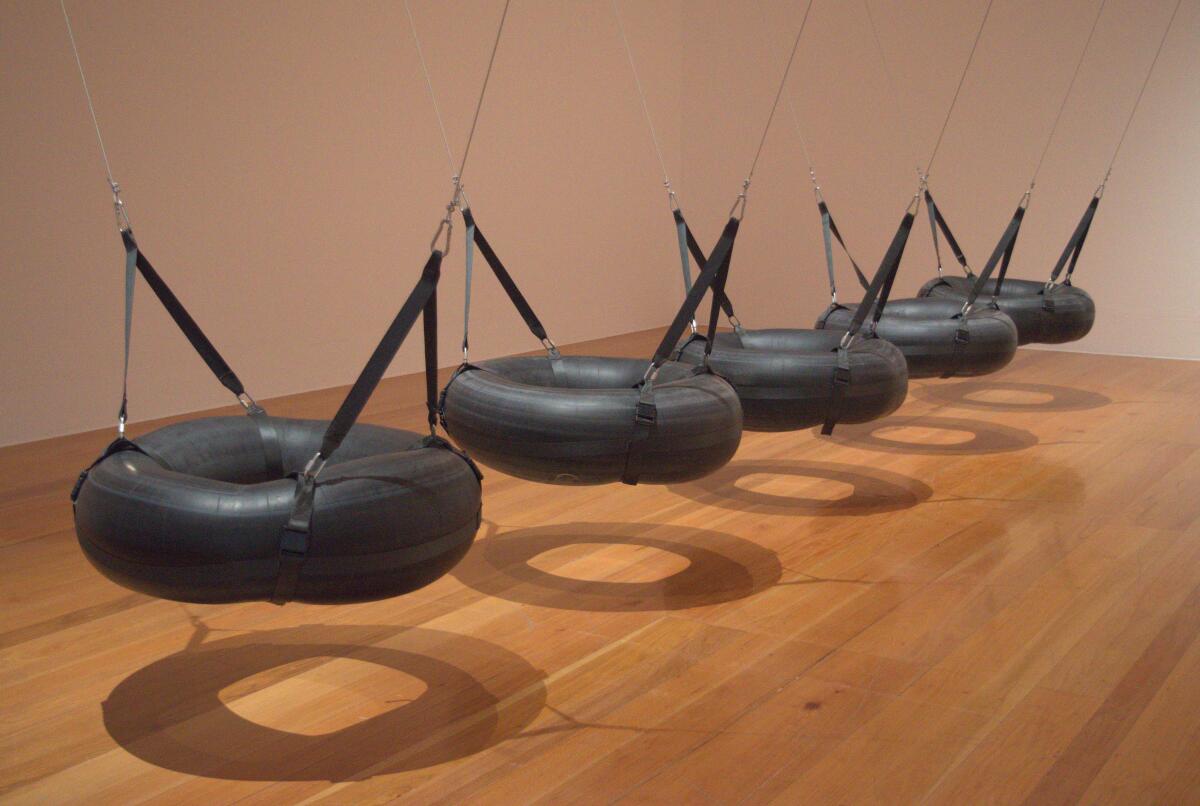
marcelaygina would probably be far better known had they lived in a more prominent art center. But its their context, ultimately, that makes their work so intriguing — and so fearless. Emerging from the industrial landscapes of Monterrey, at a time in which the city’s politics and economics were in flux, these are artists who made work without consideration for the market or for the entrenched hierarchies of the art world.
If you find yourself in Monterrey, do not miss.
Nos gustaría contestar algunas preguntas: colectivo marcelaygina,” 1997-2010,” is on view at the Museo de Arte Contemporáneo de Monterrey (MARCO) through February 2023; marco.org.mx.
Classical notes
Times classical music critic Mark Swed got two intriguing perspectives on Mahler’s Ninth Symphony this past week — “an abstract symphony that contains his deepest and most enduring last thoughts.” The first was led by Michael Tilson Thomas, ending his two weeks as guest conductor of the L.A. Phil; the second, a performance by the Pacific Symphony led by Carl St.Clair.

In and out of the galleries
For the past eight years, the 18th Street Arts Center has been leading the community creation of a map intended to document “cultural assets” in Santa Monica’s Pico neighborhood — such as individuals, locations, organizations and events, with an emphasis on those that predate the area’s gentrification. Now, thanks to a $3.3 million grant from the California Arts Council, the program is expanding statewide. Want to join in? Cultural writer Deborah Vankin has the deets.
Enjoying this newsletter? Consider subscribing to the Los Angeles Times
Your support helps us deliver the news that matters most. Become a subscriber.
There is a new gallery in downtown L.A.: Good Mother Gallery, which has its roots in Oakland, has opened up shop in the Arts District, near the 6th Street Viaduct. Led by brothers Ian and Jared Jethmal, part of the aim is to forge more artistic connections between L.A. and the Bay Area.
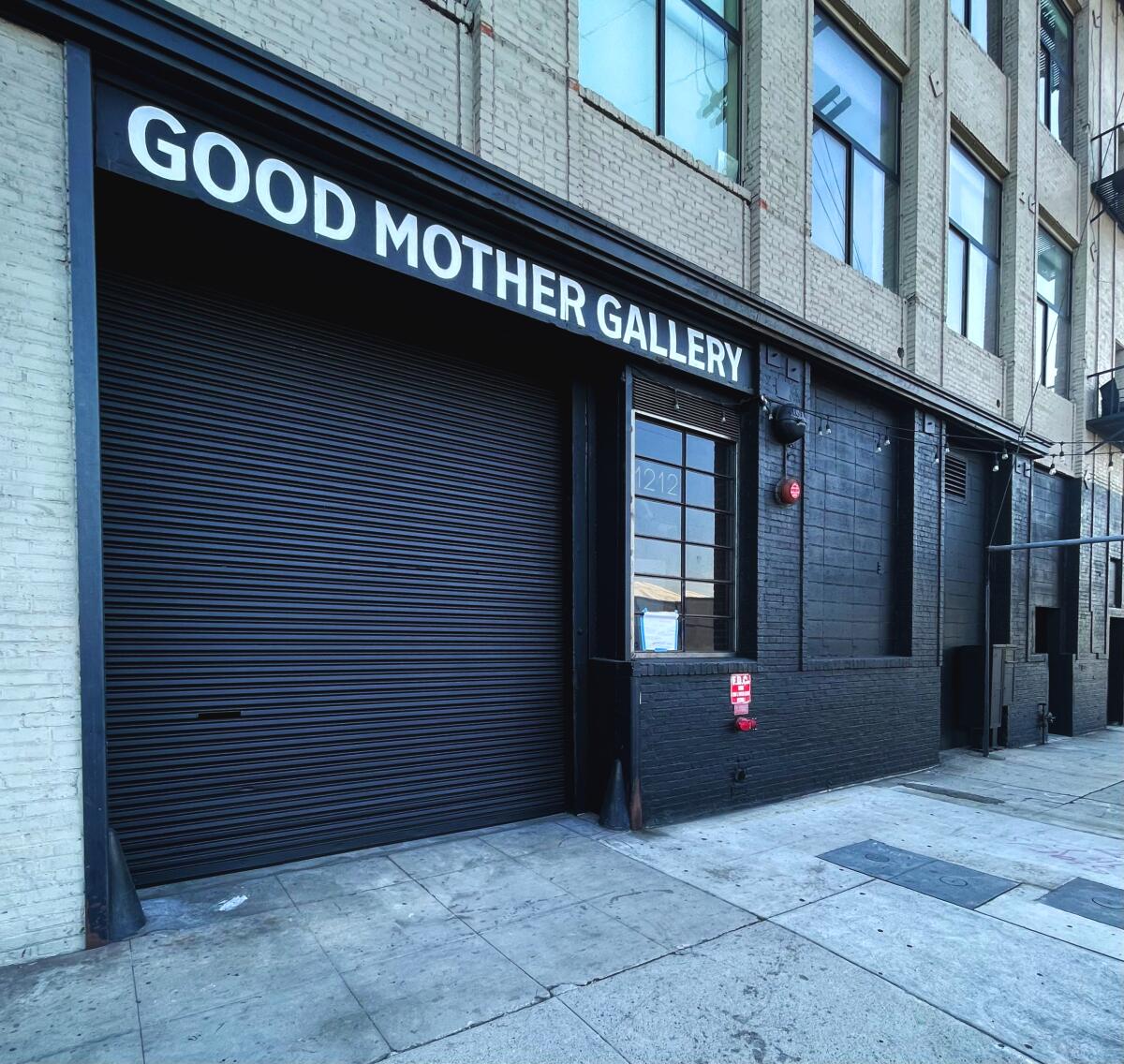
A monument to Martin Luther King Jr. in Boston by artist Hank Willis Thomas — featuring a pair of disembodied arms inspired by a photo of the civil rights leader embracing his wife — has been making headlines for the other body parts it may or may not resemble. In an interview with CNN, Thomas says he will not be making any changes to the piece.
Speaking of monuments, I’ve been digging into a new podcast titled “The Statue” by Monument Lab director Paul Farber. It tells the story of the famous Rocky statue in Philadelphia — everything it represents and all that it elides.
Interesting fact: there’s a monument to disgraced former L.A. councilman José Huizar in Zacatecas.
On and off the stage
Playwright Warren Leight’s “Home Front,” currently on view at the Victory Theatre in Burbank, imagines the romance between a Black naval officer (played by C.J. Lindsey) and a white widow looking to restart her life (Austin Highsmith Garces) in the wake of World War II. It’s a work, writes Times theater critic Charles McNulty, that “doesn’t prettify the ugly side of our history.”
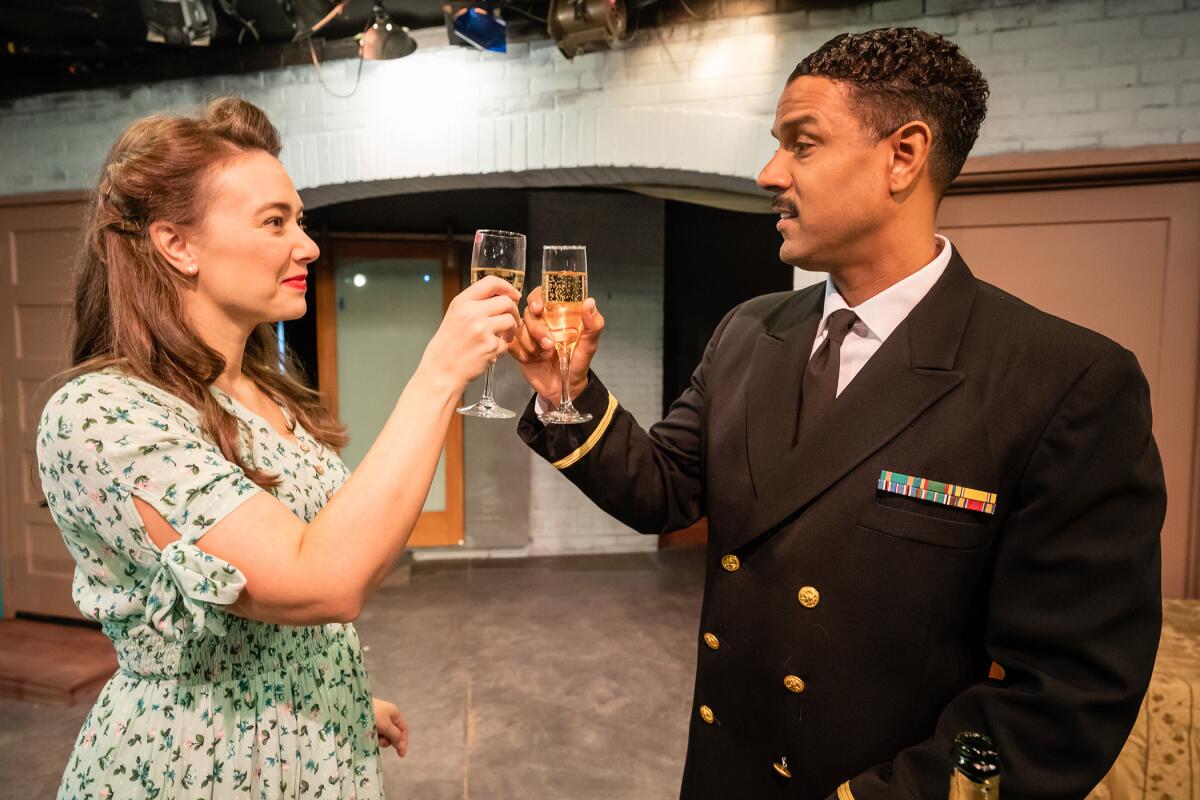
Essential happenings
Heading out to Palm Springs’ Modernism Week? Writer Lisa Boone rounds up the best events and tours.
As always, Steven Vargas has all the best happenings in his latest L.A. Goes Out newsletter, including the annual Dance Camera West film festival and a new Kehinde Wiley show at Roberts Projects. Plus, he reports on the performances accompanying Simone Forti‘s show at MOCA.
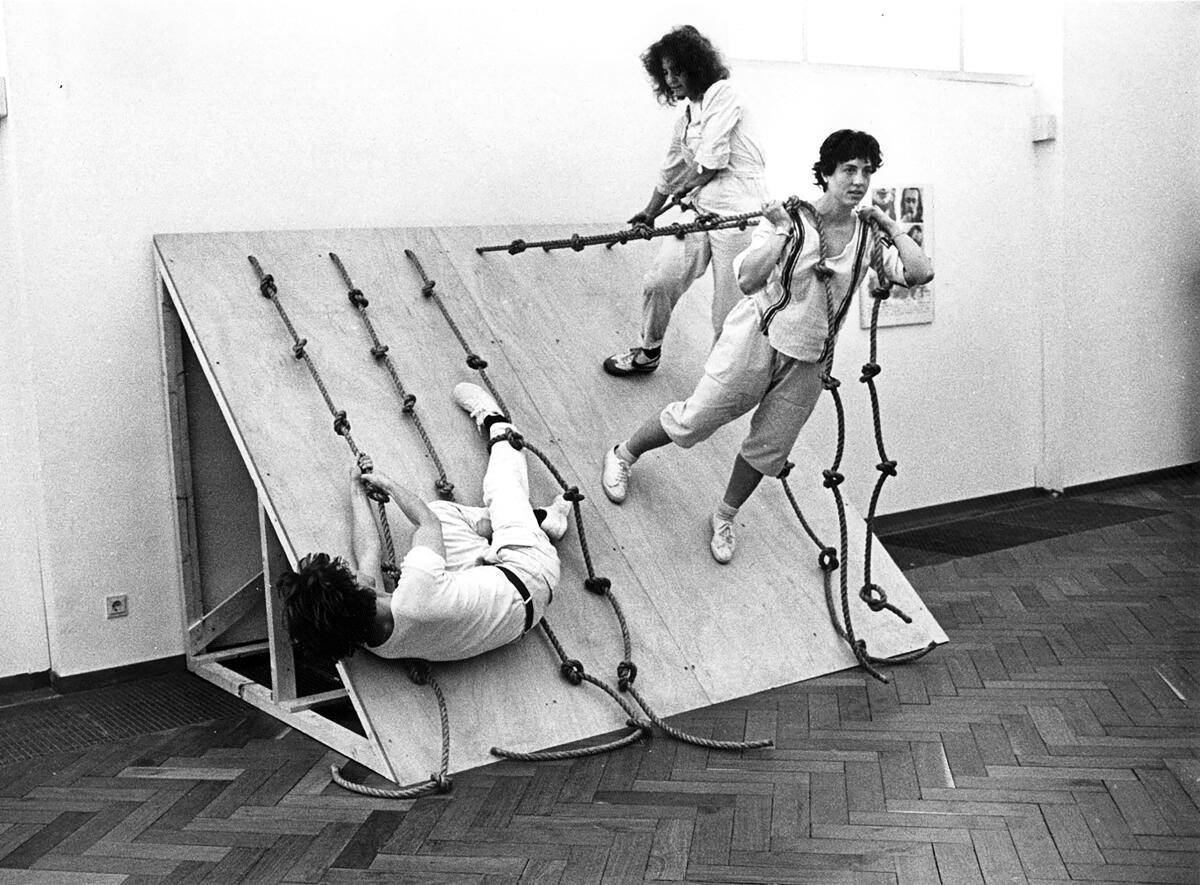
And Matt Cooper has his latest culture guide — it’s got dance, comedy, jazz and classical music — conveniently arranged by neighborhood, so you know what’s going down near you.
Moves
The L.A. New Play Project announced its support of four plays, three playwrights and four producers as part of its 2022/2023 awards. They include “Unrivaled” by Rosie Narasaki and “SHE” by Marlow Wyatt.
Last August the Museum of Contemporary Art Santa Barbara announced it would be shutting down due to financial problems. Now it is back — reopening to the public this weekend with an open house.
Passages
Arthur Duncan, a tap dancer known for keeping the form visible, in part through an 18-year-run on “The Lawrence Welk Show,” has died at 97.
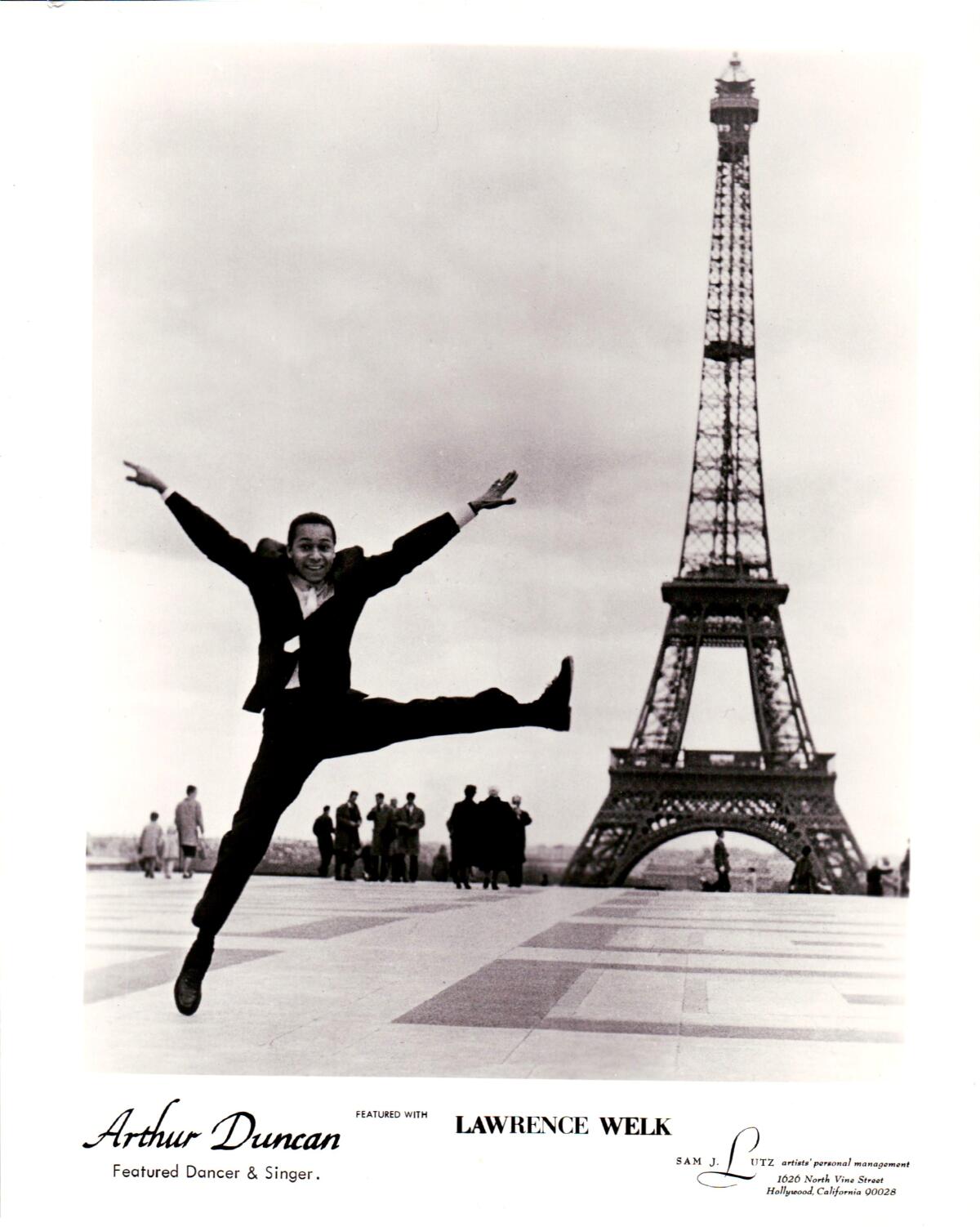
Lupe Serrano, a prima ballerina with American Ballet Theater, who was known for her virtuosity, and for dancing with figures such as Rudolf Nureyev, is dead at 92.
Jean Velez, an acrobatic dancer known for her way around the Lindy Hop, has died at 98.
Guadalupe Rivera Marín, a historian and former Mexican senator who was the daughter of muralist Diego Rivera and writer Lupe Marín, has died at 98.
In other news
— “The dampened thud of a silver spoon falling on a plush dining-room carpet.” Rob Anderson on the closing of Noma, a restaurant that was celebrated by critics but operated largely on free labor.
— A new book tracks artist Barbara Chase-Riboud‘s life through her letters to her mother.
— Cave paintings may contain a proto-written language.
— Musician Nick Cave wants nothing to do with Chat GPT: “As far as I know, algorithms don’t feel.”
— How the design of LACMA’s Scandinavian design show embodies its principles within the installation.
— My colleague Nabih Bulos has a terrific dispatch on Saudi Arabia‘s building ambitions. Maybe “delusions” is a better word.
— Matteo Messina Denaro, a notorious Mafia boss who ordered a series of ‘90s bombings that led to many fatalities and damaged the Uffizi Galleries, has been arrested.
— Temple Grandin on how our educational system is failing visual thinkers.
— The personal effects of André Leon Talley are up for auction at Christie’s and I do believe I may need that gold brocade caftan.
And last but not least ...
The Daily Show’s Leslie Jones on that MLK statue in Boston. Includes the best description yet of the Mona Lisa. (Starts at minute 5:01)
The biggest entertainment stories
Get our big stories about Hollywood, film, television, music, arts, culture and more right in your inbox as soon as they publish.
You may occasionally receive promotional content from the Los Angeles Times.




